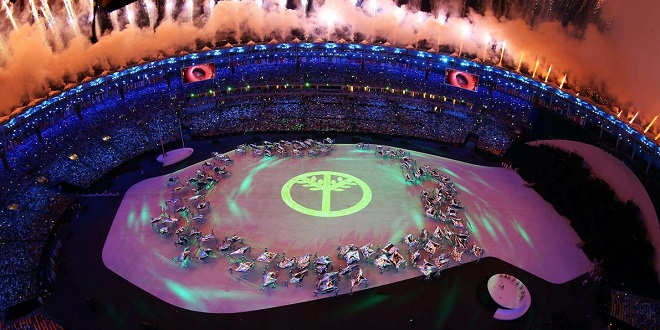
Rio de Janeiro, Brazil | AFP |
Brazil’s been partying hard for five years, hosting a string of international mega-events that end this Sunday with the Paralympics. So is it time for the hangover?
There was the 2014 football World Cup, the Confederations Cup, the Rio+20 United Nations environmental summit, World Youth Day with Pope Francis, and then the Olympics in August and Paralympics in September.
At each stage, the same fears of catastrophic delays — or worse — were raised. And each time Brazil defied its doubters, sending its guests home happy.
But it’s been a grueling path, coinciding with a precipitous decline in the once booming economy and a correspondingly sharp rise in political instability.
Dilma Rousseff was ejected from the presidency on the eve of the Olympics and her replacement, President Michel Temer, was loudly booed at the opening ceremony.
Meanwhile, Luiz Inacio Lula da Silva, who as president saw Brazil win the bidding to host the World Cup and Olympics, is now facing serious corruption charges.
As the economy continues to struggle in deep recession, a debate is under way over whether the billions spent on preparing for the events have left lasting infrastructure improvements — or just a lot of useless vanity projects.
Herd of white elephants?
The World Cup came in for scrutiny after staging the tournament in 12 cities, some of them with no strong football market, such as the capital Brasilia, Manaus or Natal in the northeast. Stadiums built for the event in these cities have since sat largely unused.
It was the approximately eight billion reais ($3.4 billion in 2014) price tag for the stadiums that drew hundreds of thousands of Brazilians to protest, demanding the money instead be spent on transport, health and education.
The World Cup cost 25.5 billion reais to put on, the most expensive in history, while the far bigger Olympics, at 38 billion reais (about $11.5 billion dollars) came in less than the London 2012 Games and far under the previous Beijing costs.
Olympic organizers called these the budget Games, emphasizing that 57 percent of funding came from private, not state sources.
“Rio is a success story and when we don’t get a national investor, we get an international partner,” deputy mayor Rafael Picciani said.
The city also says that the Olympic arenas will get continued use, and not end up as white elephants. Still, there are skeptics.
“The local sporting industry is small in comparison to these events. And what private enterprise is going to want to run a velodrome when what people really like here is football?” asked sports market specialist Erich Beting, editor of the Negocio del Deporte blog.
A white elephant isn’t the worry, he says. “The risk is a herd of white elephants.”
Transformed for the good?
The World Cup legacy projects were meant to include transport improvements as far apart as Sao Paulo, Fortaleza, Cuiaba and Recife. But not only were they not completed — they’re still unfinished and showing no sign of going anywhere, Globo television reported in March.
Rio de Janeiro tried to avoid these problems, saying the Games would transform the ramshackle city for the better.
A new metro line and bus system for example have raised public access to mass transport from 18 percent to 63 percent. New public spaces and schools have been built and areas of the once dirt and dangerous city center have been restored.
“Rio was in decline. It had been 35 years since major investment took place,” said Lamartine da Costa, a sports administration professor at Rio de Janeiro State University.
But that progress came at a cost for the city’s most vulnerable, according to activists like the Popular Committee, branding the works that took place across the city as a mission to take over valuable land and push the poor to the margins. Between 2009-2015, more than 22,000 families were forced to move house, activists say.
Now another group of residents will be wondering what comes next after the party: the approximately 30,000 workers who got jobs during the build-up and now are joining the country’s huge army of unemployed.
 The Independent Uganda: You get the Truth we Pay the Price
The Independent Uganda: You get the Truth we Pay the Price



